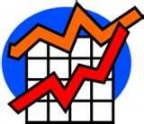About Citation Tools:
Types of Tools
The First Citation Indexes
A citation database is similar to a literature database, except that it also tracks where and how many times an article is cited. As part of providing citation data, these databases include the bibliographies of papers, and link papers together by citation relationships.
The first citation database, now called Web of Science, was created by Eugene Garfield in 1961. Garfield was especially interested in looking at citation patterns in the scientific literature to trace the growth of knowledge and the development or ideas for research topics. These citation databases were called Science Citation Index, Social Sciences Citation Index, and the Arts and Humanities Citation Index.
A citation database is similar to a literature database, except that it also tracks where and how many times an article is cited. As part of providing citation data, these databases include the bibliographies of papers, and link papers together by citation relationships.
The first citation database, now called Web of Science, was created by Eugene Garfield in 1961. Garfield was especially interested in looking at citation patterns in the scientific literature to trace the growth of knowledge and the development or ideas for research topics. These citation databases were called Science Citation Index, Social Sciences Citation Index, and the Arts and Humanities Citation Index.
Over time, citation data and citation analysis became more and more important in evaluating not just individual journal articles or journals, but data were applied to evaluate the research productivity and quality of individual investigators, academic departments, and even whole institutions. Once the Web of Science database was put online, it became easier to perform many types of citation analysis.
Despite controversy over some of the uses of citation data, it is valuable in many ways and over the past several years many new citation tools have been created, or existing tools modified to include citation data.
Beyond Web of Science:
New and Emerging Citation Tools and Data
Sources of citation data can be divided into several categories. More and more journal and database publishers are adding citation data to their products, although many of these newer sources of citation data may only include citation information that goes back 5-10 years.
For example, JSTOR is one database that has started providing citation information. However, when you look at an older article, you can only ‘see’ other articles in JSTOR that site your article of interest in JSTOR. Data for journals that aren't in JSTOR but that cite a paper will not be available.
Citation tools can be categorized in the following way:
- Major interdisciplinary databases: The primary one is Web of Science (known as Citation Indexes). Recently the publisher Elsevier came out with a new citation database called Scopus.
- Google Scholar
- Disciplinary or specialty databases: Social science online resources that have added citation data include PsycInfo and JSTOR. Many science databases have also added citation data.
- Database aggregators: Some of the content available through these database collections has been added by the author of the database, and other by the company providing the interface. Examples include: Academic Search Premier, PsycINFO in EBSCOHost, and PsycINFO, Social Services Abstracts, Sociological Abstracts, and some special full-text collections in CSA Illumina.
- Publisher web sites: These include Wiley Interscience, Ingenta Connect, and Sage Full Text Collection (Elsevier provides citation data via Scopus, which requires a subscription.)


